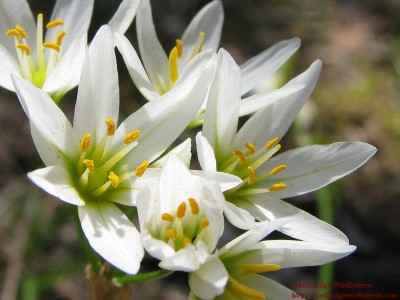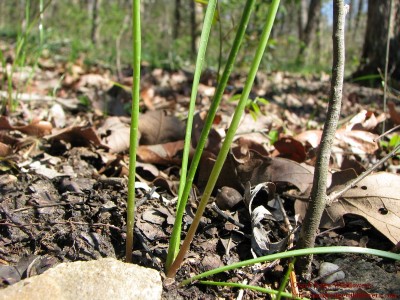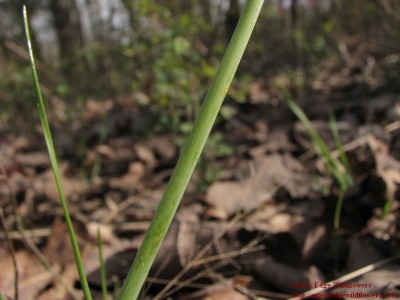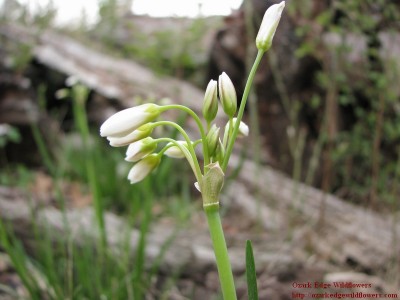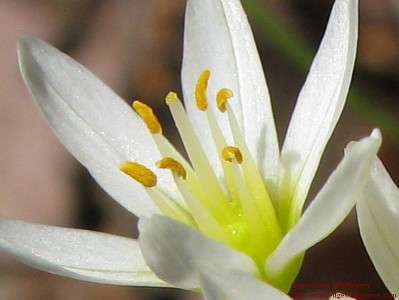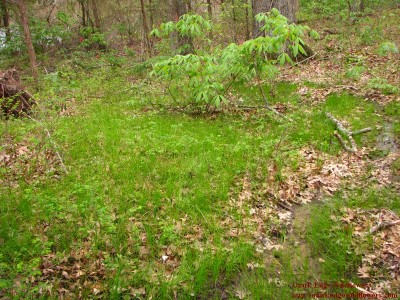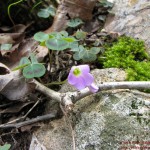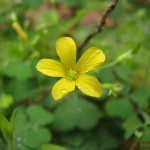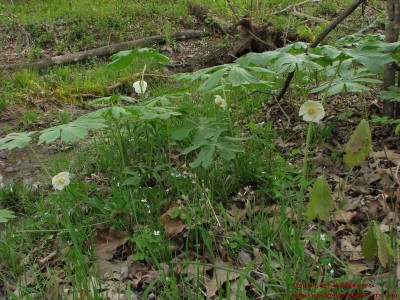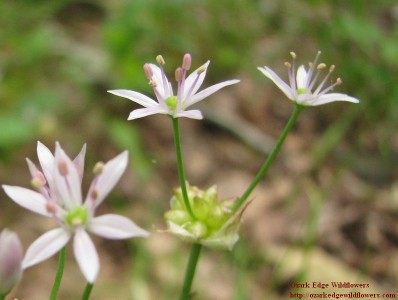I first noticed Nothoscordum bivalve while tromping through the spring woods. In the distance, my eye caught what looked like a patch of bright green grass. The green was a refreshing site against the still brown woodland. Spring had only barely begun and the green patch drew me toward it like a moth to a light. But, it wasn’t grass at all. Over the next few weeks I observed it go into bud and then bloom into the fresh white flowers of Nothoscordum bivalve.
Latin Name/Common Name- Nothoscordum bivalve, once placed in the Liliacea (Lily) family, has been moved to the newly constituted Alliaceae (Onion) family. It’s common name- False garlic is fitting in that it does resemle a garlic plant, although it does not have a garlic scent. It’s other common name is Crow poison. Cherokee legend tells that they would use this plant to make a poison that would kill the crows eating their corn.
The word Nothoscordum is derived from the greek word Nothos meaning “false” and Scordum, meaning garlic.
Bloom Color- The pretty flowers of False garlic have bright white petals with greenish yellow centers and prominent yellow anthers. The shy flowers do not open on cloudy days.
Macro view of flower cluster
Description- Arising from an underground bulb, the stems of Nothoscordum bivalve grow about a foot high. The stems are smooth, hairless and hollow. Each plant has several long, grass-like leaves that emerge from the base of the plant.
Stems and leaves
Smooth stem
Eight or more small flowers appear at the terminal end of the stem. The flowers are fragrant, giving rise to another common name–Fragrant false garlic. But, you will have to get down on your knees to appreciate their sweet scent.
Flower buds in March
Macro view of stamens and style with stigma
There are six stamens with yellow-orange anthers atop stout filaments. The filaments arise at the base of the six white tepals with the greenish ovary nestled in the center. The orange stamens and green ovary provide a lovely contrast with the white tepals of the flower.
The style is almost like a matchstick, topped with a knobby yellow-orange stigma. The sepals and petals of Nothoscordum bivalve are not individually distinguishable. In plants in which this occurs, the sepals and petals are collectively called a perianth. Flowers that have this type of arrangement are said to have tepals (the combination of the sepals and petals) rather than petals.
Bloom Time On Ozarkedge, Nothoscordum bivalve blooms in the early spring between March and April. The bulbils form in late April and May and continue the show. Depending on weather, a second blooming from the new plants may occur again in autumn.
Habitat- Nothoscordum bivalve is found in open woods and cedar glades.
The carpet of False garlic in March looks almost like spring grass in the woods
What’s Growing Nearby? Many spring ephemerals share their habitat with false garlic. Below is just a small sampling.
Oxalis violaceae and Oxalis dillenii (Violet and Yellow wood sorrel) grow near Nothoscordum bivalve
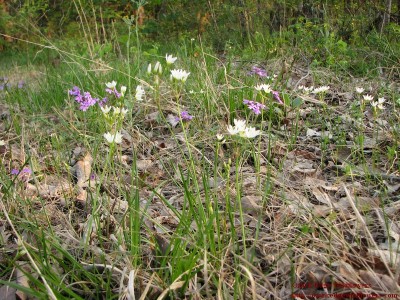
Glandularia canadensis (Verbena) with Nothoscordum bivalve
Podophyllum peltatum (May apple) with Nothoscordum bivalve
Endangered List- In some areas, Nothoscordum bivalve is so common that some consider it a weed—although it is not invasive and is a native plant. But, like many of our native wildflowers, it is struggling for survival in parts of its native range. It is listed as Rare in Indiana and Threatened in Ohio.
http://plants.usda.gov/java/profile?symbol=nobi2
Interesting Tidbits- As mentioned above, one of the common names for Nothoscordum bivalve is Crow poison. The same Cherokee who harvested this plant to poison the crows eathing their corn, were also careful to avoid it when harvesting a similar plant- Allium canadense var. lavendulare, otherwise known as Wild onion. They used wild onion to flavor their food. Another similar plant is Alliam canadense var. canadense. This is Wild garlic. Wild garlic grows prolifically on Ozark Edge. It blooms slightly later than False garlic.
Allium canadense var. canadense

